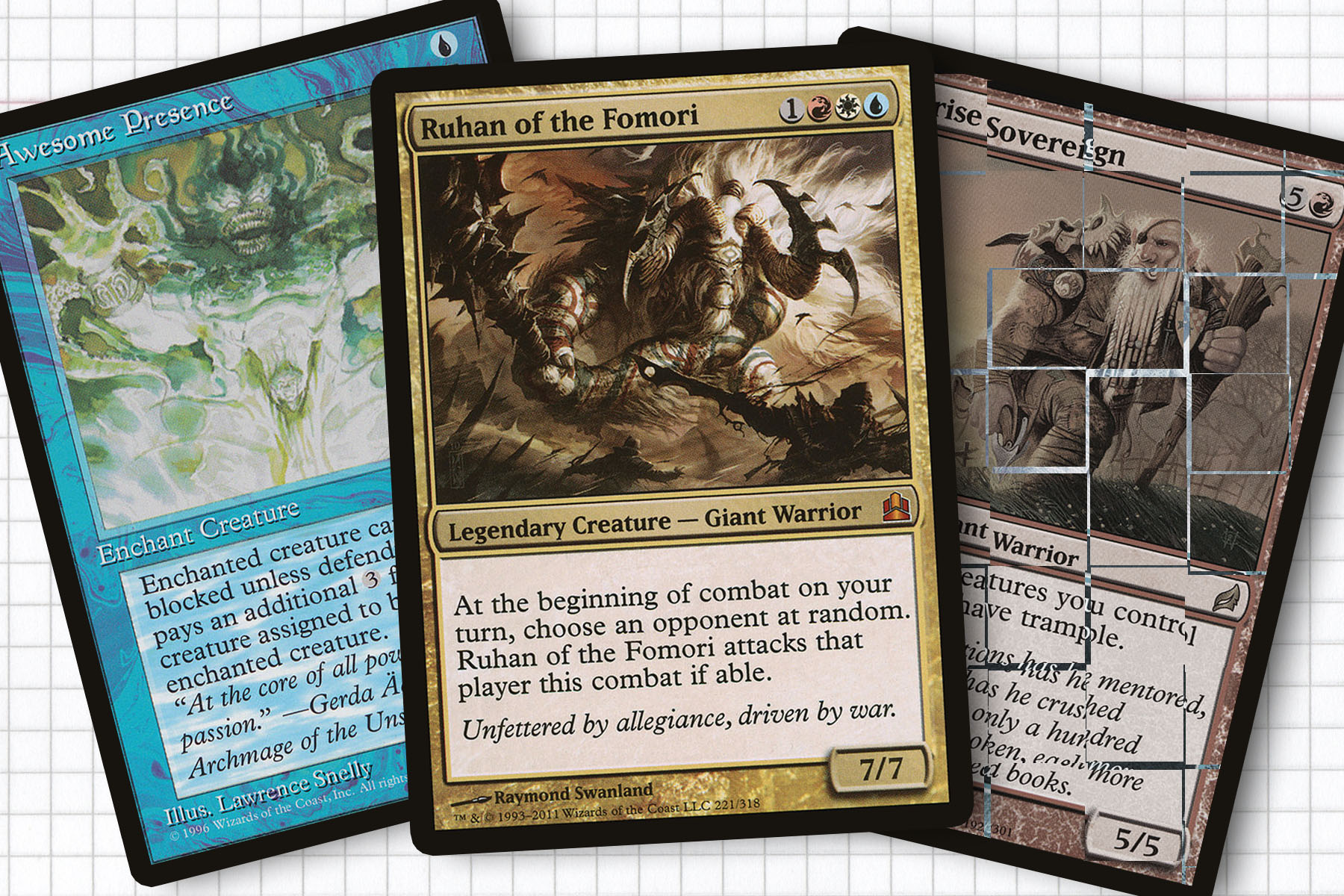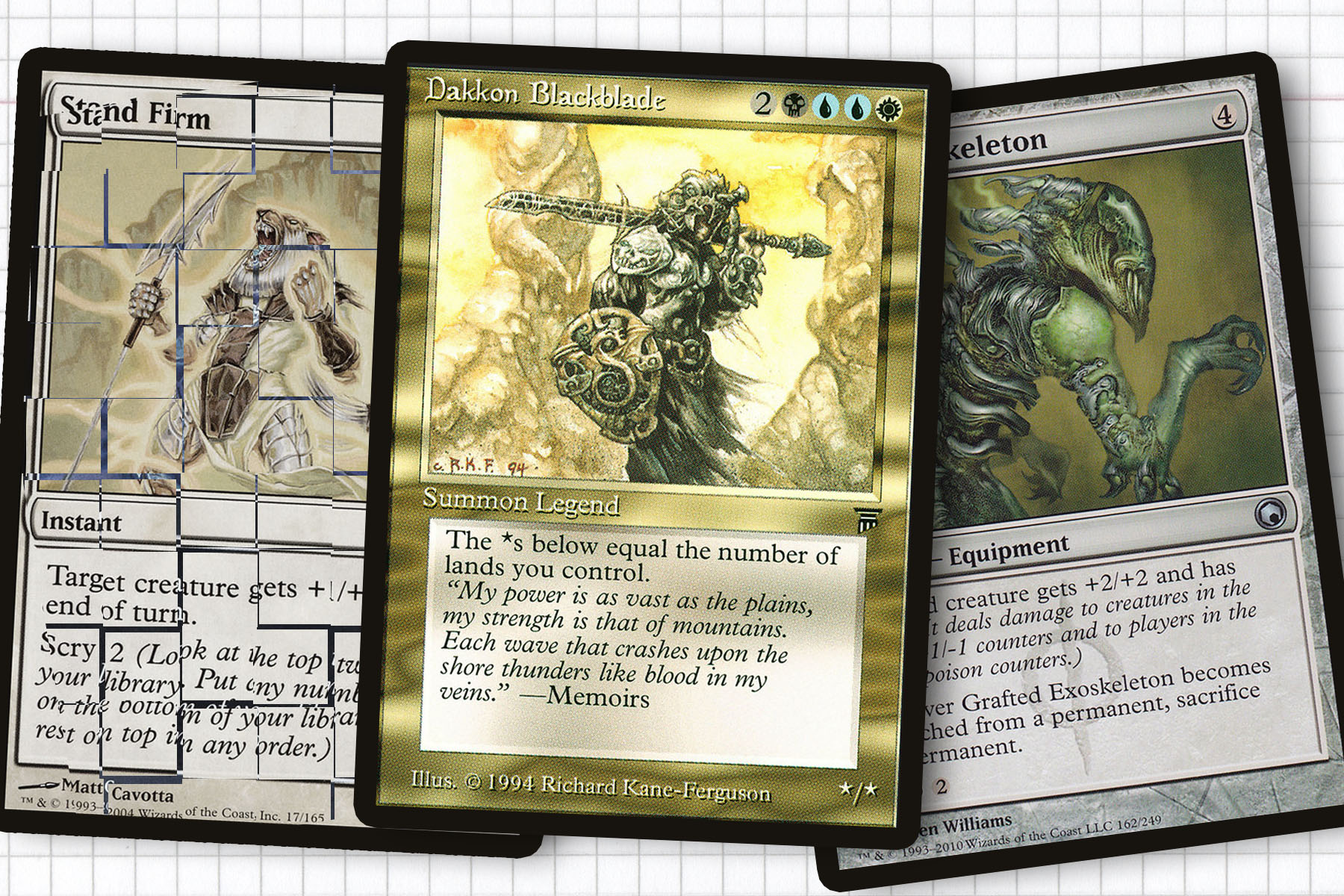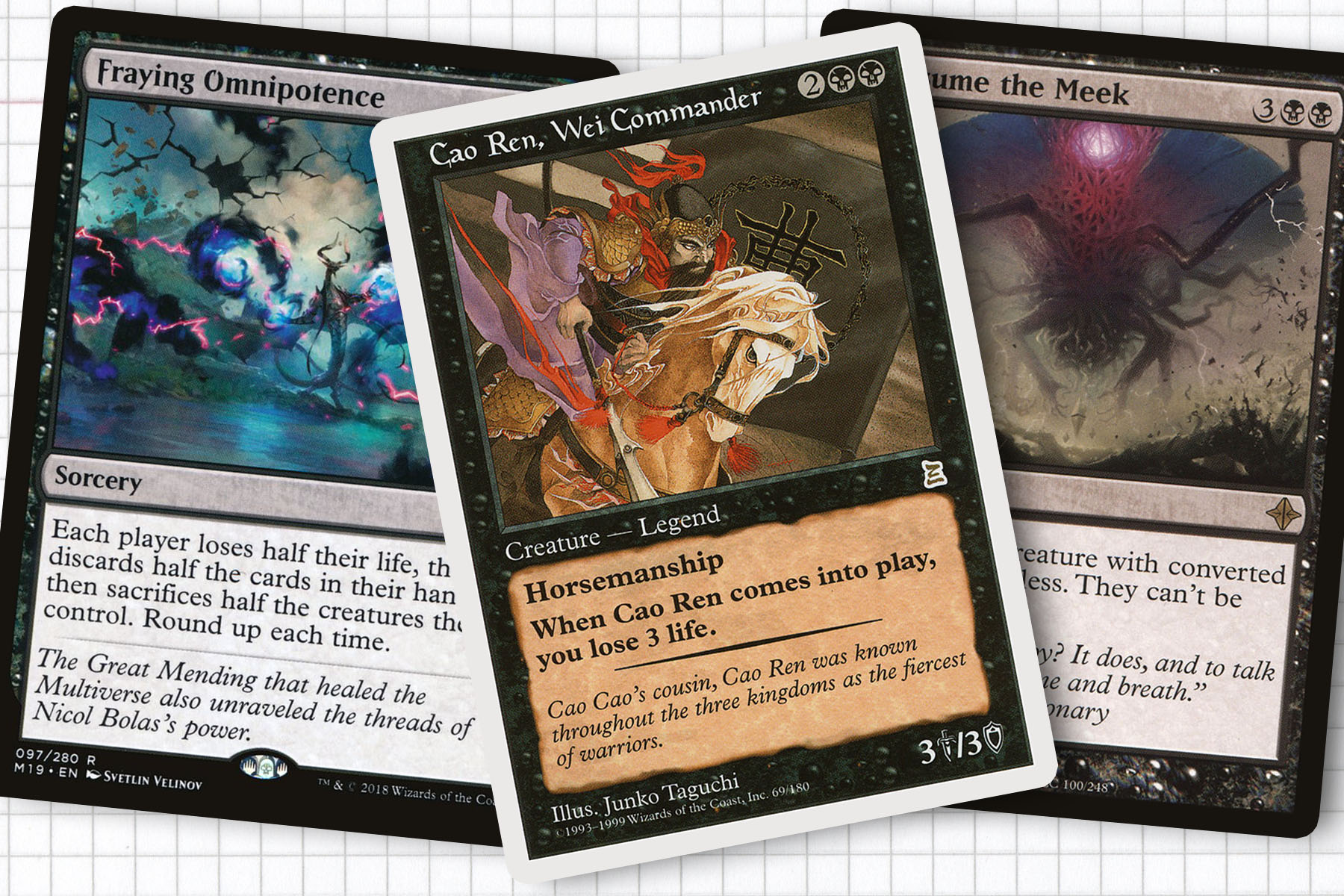As a Commander content creator, I have written about many, many decks. Often I’m inspired to build a deck after writing about a general’s possibilities—sometimees even successfully. This week I begin a new intermittent series of articles where I revisit decks that I built and maintained after writing about them. I want to explore the leap from conceptual article to physical deck.
Starting from the beginning of my time writing for Hipsters of the Coast, three decks I built are still in my rotation of decks. My articles on Ruhan of the Fomori, Dakkon Blackblade, and Cao Ren, Wei Commander are some of my earliest, so it will be enlightening to see the pitfalls of my original deck skeletons. I know that chronologically beyond these three, there are decks that have tried and failed to catch on. Look out for more installments in the future.

Ruhan Smash!
When I chose the topic for my first article, I went with something that I had always wanted to build but never got around to. It meant that in the writing and deck design process I was theory-crafting the same as any deck I had previously intended to build. What drew me to Ruhan of the Fomori in the first place was the impressive base stats of a 7/7 for four mana. What I outlined was part giant tribal and mostly Voltron specific. I thought I was onto something, and I built the deck to see what could become of it.
As with many decks I built back in 2017, my deckbuilding improved significantly after playtesting. For example, trying to introduce more randomness through Impulsive Maneuvers was not the right call. It caused games to go on longer than I intended without improving the gameplay. By contrast, Duelist’s Heritage provides some agency and constructively pushes the game forward.
My original conception for Ruhan was too focused on having all the answers I would ever need. But the unpredictability of other players also trying to defeat your mutual opponents often means that you’re not playing to beat the table single-handedly. My deck doesn’t have to do everything, and that realization opened space in the deck for a lot more power. From experience, I can say that Awesome Presence, Laccolith Rig, and Kithkin Armor were inspired choices. Since we have no control over where we attack, the ability to avoid blockers or disincentivize blocking proves powerful.
The last year has been decent for Ruhan. All That Glitters has proven to be a solid second copy of Auramancer’s Guise, helping to knock out an opponent through Ciommander damage in two combat steps. While Sunrise Sovereign had some appeal by granting trample, I’ve found more success with Realm-Cloaked Giant simply casting off the rest of the board. Colossus Hammer got strong consideration, but has been in and out of the deck—we don’t have the resources to pay its eight-mana equip cost.

Dakkon’s Shadow
Dakkon Blackblade was one of my earliest articles about Dollar General. My goal was to construct a deck built around shadow creatures, with a possible win-condition of granting Dakkon Blackblade shadow. This was part of my general approach at the time: to highlight a generals that popular during the early days of the format that had fallen into obscurity as Wizards began designing directly for the format.
The biggest drawback to shadow is unquestionably that it puts you on a completely different axis from the rest of the table. They can’t block you, but you can’t block them. The lower efficiency of Dollar General was a saving grace for this deck, giving me an excuse to make something that would normally come off as suboptimal. But since price fluctuations can completely invalidate a deck list three years later, I have developed the skeleton as a work-in-progress.
With 26 shadow creatures in the deck and three ways to give my general shadow, I’ve found this deck enjoyable to play even with its shortcomings. My original draft included a few slivers, but I cut them for infect cards instead. Glistening Oil, Grafted Exoskeleton, and Snake Cult Initiation have pushed the deck to become joyfully aggressive. The exalted mechanic has also proven effective for small gains, especially with Battlegrave Angel giving my general lifelink.

Cao Ren, Death’s Stalker
I conceived my Cao Ren, Wei General deck to function as a black Invisible Stalker in the simplest terms. The idea was to use horsemanship and a lot of powerful “saboteur” effects, like Scytheclaw, Quietus Spike, and Ebonblade Reaper, to help level the playing field and win without having to rely on commander damage. I was also enthralled by ways to use Spellbinder, packing the deck with simple instant spells like Rend Flesh or Hero’s Downfall, all the way up to ridiculous stuff like Wretched Confluence and Consume the Meek. From there the deck almost built itself, grabbing Voltron pieces like Veteran’s Armaments, Obsidian Battle-Axe, and Hero’s Blade to gain those edges and attack an unsuspecting table.
Unlike some of the other decks I have written about today, I was excited to build this long before I wrote about the concept, and I’d been hunting down singles for the deck for a while prior. At the time, Voltron decks were out of style in my playgroup and people were still avoiding tuck effects. In that gap of coverage, this deck thrived for months and became something I would run out at the end of the night. Either I would push the last game to a quick ending, or I’d burn out fast enough to still make it home at a reasonable time.
Cao Ren has been really good to me. No deck is perfect and most have their blindspots, but this deck wasn’t designed to have answers for everything. My notable additions have been Dire Fleet Ravager, Fraying Omnipotence, and Virtus the Veiled, all cards that didn’t exist three years ago. I wouldn’t say this deck has become synonymous with me, but I believe it is emblematic of what I like to get out of Commander: playing cards you wouldn’t see in any other format and winning through a lack of proper threat assessment.
As Commander players, we don’t often have to justify our card selections or critically think about the lessons we’ve learned when assembling a deck. But I think it’s very important to be honest from time to time and identify cards that we thought were going to be worthwhile versus we could only uncover once we’d grown accustomed to a deck list. Even more importantly, I think it’s important to understand why a deck just didn’t work—something I will surely revisit the next time I return for new perspective.
Ryan Sainio is a Graphic Designer who writes about EDH and the EDH community. He has been playing Magic: The Gathering since 7th Edition in 2002 and values flavorful and fun gameplay over competitively optimized decks.

